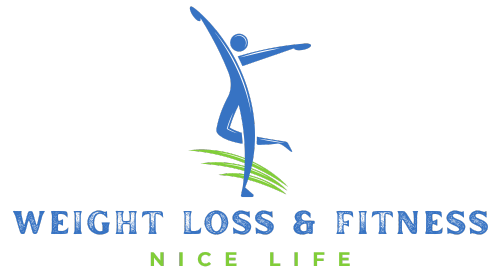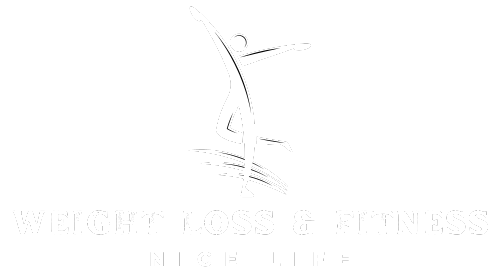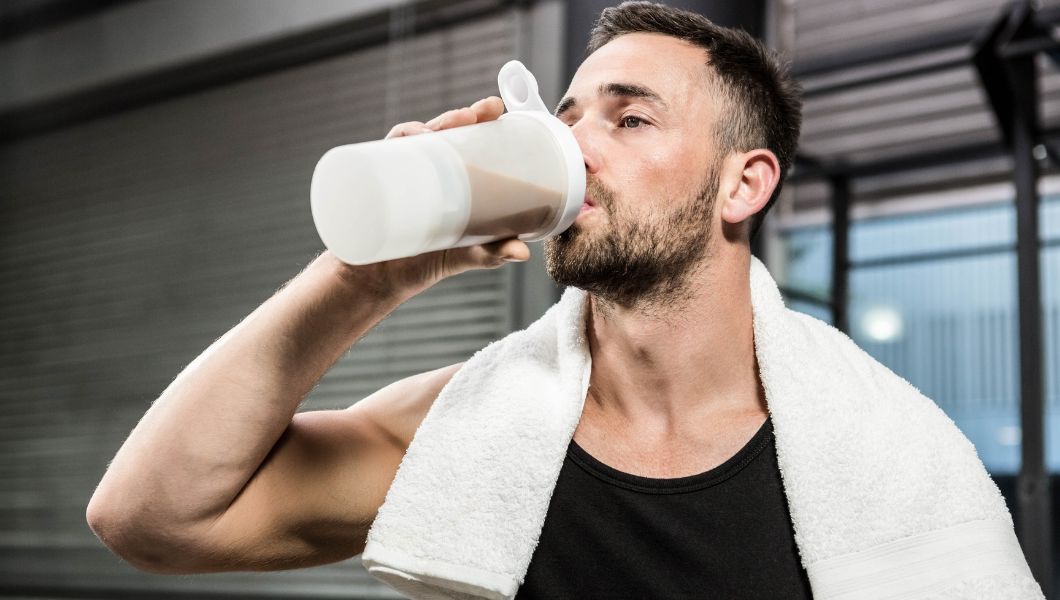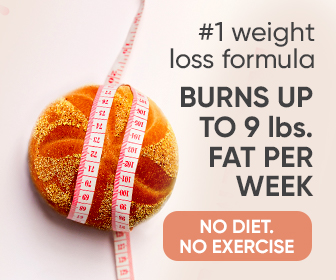In this article, we will delve deeper into the relationship between protein intake and fitness goals, explore the types of protein powders available, and provide a range of protein shake recipes for muscle gain and fat loss.
Nutrition plays a pivotal role in determining the success of any fitness journey. Whether the goal is to build muscle, shed fat, or achieve a combination of both, what we put into our bodies directly impacts the outcomes we seek.
Proper nutrition provides the necessary fuel, nutrients, and building blocks for our muscles, while also influencing our metabolism, energy levels, and overall health.
Without the right nutrients, even the most rigorous workout routines may fall short of yielding desired results.
Balancing macronutrients, incorporating vitamins and minerals, and maintaining an appropriate calorie intake are all integral components of reaching fitness goals.
Protein shakes have emerged as a convenient and effective tool within the realm of fitness nutrition. They offer a concentrated source of high-quality protein, which is essential for repairing and building muscle tissues.
Proteins consist of amino acids, commonly known as the fundamental “building blocks” of the body. Consuming an adequate amount of protein supports muscle recovery, growth, and maintenance, especially when coupled with an exercise regimen.
Additionally, protein plays a crucial role in fat loss. A higher protein intake has been shown to promote satiety and reduce appetite, potentially leading to fewer overall calories consumed.
Moreover, the thermic effect of protein, which is the energy expenditure required for digestion and absorption, contributes to a slight increase in metabolism.
Protein shakes offer a practical way to meet daily protein requirements, especially for individuals with busy lifestyles.
By providing a concentrated dose of protein, they can help optimize muscle-building processes and assist in managing body composition.
I. Protein and Its Role in Muscle Gain and Fat Loss

A. Explanation of Protein’s Importance for Muscle Repair and Growth
Protein stands as a cornerstone in the pursuit of both muscle gain and fat loss. When engaging in physical activities like weightlifting or resistance training, muscles undergo micro-tears that require repair.
Protein’s primary role is to provide the necessary amino acids for this repair process, promoting muscle recovery and growth.
Through a process called protein synthesis, the body uses amino acids to rebuild and strengthen muscle fibers.
Consuming an adequate amount of protein supports the body’s ability to recover from workouts, leading to increased muscle mass over time.
This is particularly important for individuals aiming to enhance their physique, boost athletic performance, or counteract muscle loss associated with aging.
B. Protein’s Effect on Satiety and Metabolism, Aiding in Fat Loss
Beyond its muscle-building benefits, protein also plays a pivotal role in the realm of fat loss. One of its most notable effects is its ability to induce a feeling of fullness, or satiety.
High-protein meals and snacks have been shown to promote greater satiety compared to meals lower in protein, potentially reducing overall calorie consumption.
This satiating effect can be attributed to various mechanisms, including the impact of protein on hormones that regulate appetite, such as ghrelin and peptide YY.
By curbing hunger and reducing the likelihood of overeating, a diet higher in protein can contribute to a caloric deficit, a fundamental factor in fat loss.
Moreover, protein’s effect on metabolism further aids in fat loss. The thermic effect of food (TEF) pertains to the energy expenditure necessary for the digestion, absorption, and processing of nutrients.
Among the three major macronutrients (carbohydrates, fats, and protein), protein has the highest thermic effect.
This means that a portion of the calories from protein is expended during digestion and is not stored as fat.
By incorporating protein into the diet, individuals can potentially increase their metabolic rate and overall energy expenditure, contributing to a more efficient fat loss process.
Understanding the dual role of protein in muscle repair and growth, as well as its influence on satiety and metabolism, provides a foundation for crafting effective nutrition strategies.
Protein shake recipes for muscle gain and fat loss offer a concentrated and convenient way to ensure adequate protein intake, making them a valuable tool in achieving the combined goals of muscle gain and fat loss.
II. Choosing the Right Protein Powder

A. Overview of Different Types of Protein Powders (Whey, Casein, Plant-Based)
Protein powders come in various formulations, each derived from different sources and offering unique benefits.
Understanding the differences between these types can help individuals choose the most appropriate protein powder for their specific fitness goals:
1. Whey Protein: Whey protein is one of the most popular choices due to its high biological value and rapid absorption.
It contains all essential amino acids and is particularly rich in branched-chain amino acids (BCAAs), which are crucial for muscle recovery and growth.
Whey protein is often recommended as a post-workout option for its ability to quickly deliver amino acids to muscles.
2. Casein Protein: Casein protein is slower-digesting compared to whey. It forms a gel-like substance in the stomach, resulting in a sustained release of amino acids over a longer period.
Casein is often suggested as a nighttime protein source to support muscle recovery during sleep.
3. Plant-Based Proteins: Plant-based options include pea, rice, hemp, and soy protein powders. These are suitable for individuals with dietary restrictions or those who prefer not to consume animal products.
Plant-based proteins can be combined to create a complete amino acid profile and offer a variety of nutrients and antioxidants.
B. Considerations for Selecting the Most Suitable Protein Powder
Choosing the right protein powder involves considering individual preferences, dietary needs, and fitness goals:
1. Goals: Determine whether the primary goal is muscle gain, fat loss, or both. Whey protein might be preferred for rapid muscle recovery, while casein or plant-based options may support satiety and longer-term amino acid release.
2. Allergies and Sensitivities: Individuals with dairy allergies or lactose intolerance may opt for plant-based proteins or lactose-free whey options.
3. Digestibility: Some people find certain protein sources easier to digest than others. Experimenting with different types can help identify the most comfortable option.
4. Flavor and Texture: Protein powders come in a range of flavors and consistencies. Finding one that tastes good and mixes well is essential for long-term adherence.
C. Reading and Understanding Nutrition Labels
Nutrition labels provide vital information about the protein powder’s contents and nutritional value. When reading labels, consider the following:
1. Protein Content: Look for the total protein content per serving. Ideally, choose a powder with at least 20 grams of protein per serving.
2. Amino Acid Profile: Check if the protein powder offers a complete amino acid profile, especially if it’s plant-based.
3. Added Ingredients: Be aware of any added sugars, artificial sweeteners, or fillers that may impact the overall nutritional quality.
4. Caloric Content: Consider the calorie count per serving, especially if managing calorie intake is important for fat loss goals.
Selecting the appropriate protein powder is a vital stride in maximizing the advantages of protein shakes for achieving muscle gain and fat loss.
By aligning the choice with individual needs and goals and understanding how to interpret nutrition labels, individuals can make informed decisions that enhance their fitness journey.
III. Protein Shake Recipes for Muscle Gain and Fat Loss
A. Whey Protein-Based Shakes
1. High-Protein Chocolate Banana Shake
- 1 scoop of whey protein powder (chocolate flavor)
- 1 ripe banana
- 1 cup of milk (dairy or plant-based)
- 1 tablespoon of natural peanut butter
- Ice cubes
- Optional: a touch of honey or a sweetener of choice
- Blend all ingredients until smooth and creamy. Enjoy as a satisfying post-workout treat.
2. Mixed Berry Whey Smoothie with Spinach
- 1 scoop of whey protein powder (vanilla or berry flavor)
- 1 cup of mixed berries (strawberries, blueberries, raspberries)
- Handful of fresh spinach leaves
- 1 cup of water or coconut water
- 1 tablespoon of flaxseeds or chia seeds
- Blend until well combined, and the vibrant colors of the berries and spinach shine through.
B. Casein Protein-Based Shakes
1. Vanilla Casein Shake with Almond Butter
- 1 scoop of vanilla casein protein powder
- 1 cup of unsweetened almond milk
- 1 tablespoon of almond butter
- Dash of cinnamon
- Ice cubes
- Blend until the mixture is creamy and the almond butter is fully incorporated.
2. Bedtime Casein Shake with Oats and Berries
- 1 scoop of casein protein powder (any flavor)
- ½ cup of rolled oats
- ½ cup of mixed berries (blueberries, raspberries)
- 1 cup of water or milk of choice
- Optional: a drizzle of honey
- Mix the ingredients in a blender or shake well in a shaker bottle. Refrigerate for a while before consuming to allow the oats to soften.
C. Plant-Based Protein Shakes
1. Tropical Mango and Coconut Pea Protein Smoothie
- 1 scoop of pea protein powder (vanilla or tropical flavor)
- 1 ripe mango, peeled and diced
- ½ cup of coconut milk
- 1 tablespoon of shredded coconut (optional)
- Water or coconut water to achieve desired consistency
- Blend until you have a creamy, tropical delight.
2. Spinach and Kale Green Protein Shake with Hemp Protein
- 1 scoop of hemp protein powder
- Handful of fresh spinach and kale leaves
- ½ banana
- 1 tablespoon of almond butter
- 1 cup of water or almond milk
- Ice cubes
- Blend until the greens are well blended, and the shake has a vibrant green color.
D. Balanced Protein-Fat-Fiber Shakes
1. Peanut Butter, Banana, and Chia Seed Protein Shake
- 1 scoop of your preferred protein powder
- 1 ripe banana
- 1 tablespoon of natural peanut butter
- 1 tablespoon of chia seeds
- 1 cup of milk (dairy or plant-based)
- Blend until all ingredients are smoothly combined.
2. Greek Yogurt and Fruit Protein Smoothie
- 1 scoop of protein powder (vanilla or berry flavor)
- ½ cup of Greek yogurt
- Mixed berries (strawberries, blueberries, raspberries)
- 1 tablespoon of oats
- 1 cup of water or milk of choice
- Blend for a creamy and satisfying protein-rich smoothie.
These protein shake recipes for muscle gain and fat loss provide a variety of flavors and combinations to support muscle gain and fat loss goals.
Feel free to adjust ingredient quantities based on your nutritional requirements and taste preferences.
IV. Incorporating Essential Nutrients
A. Adding Healthy Fats (Avocado, Nuts, Seeds) for Sustained Energy
Healthy fats are a crucial component of a well-rounded nutrition plan, even when aiming for muscle gain and fat loss.
They offer a condensed reservoir of energy and aid in diverse physiological functions. Incorporating healthy fats into your protein shakes can enhance satiety, provide sustained energy, and contribute to overall health:
- Avocado: Adding half an avocado to your shake can lend a creamy texture and provide heart-healthy monounsaturated fats.
- Nuts and Nut Butters: A tablespoon of almond butter, peanut butter, or other nut butter not only enhances flavor but also adds healthy fats and protein.
- Seeds: Chia seeds, flaxseeds, and hemp seeds are rich in omega-3 fatty acids and fiber, promoting satiety and heart health.
B. Including Complex Carbohydrates (Oats, Quinoa) to Support Workouts
Complex carbohydrates are essential for providing the energy needed to fuel intense workouts and support recovery.
Incorporating them into your protein shake recipes for muscle gain and fat loss can help replenish glycogen stores and provide a steady release of energy:
- Oats: Rolled oats are a versatile carbohydrate source that adds thickness and texture to your shake. They provide fiber and sustained energy.
- Quinoa: Cooked quinoa can be blended into shakes to boost protein content and provide complex carbs for lasting energy.
C. Incorporating Fiber-Rich Ingredients (Fruits, Vegetables) for Digestion
Adequate fiber intake is vital for digestion, satiety, and overall gut health. Fiber slows down digestion and helps regulate blood sugar levels. Including fiber-rich ingredients in your protein shakes can enhance their nutritional value:
- Fruits: Berries, bananas, and apples are excellent sources of dietary fiber and natural sweetness.
- Vegetables: Spinach, kale, and other leafy greens add nutrients and fiber without overpowering the flavor of your shake.
By incorporating these essential nutrients into your protein shakes, you create a more balanced and nourishing blend that not only supports your fitness goals but also contributes to overall wellness.
Experiment with different combinations to find the mix that suits your taste preferences and dietary needs.
V. Pre- and Post-Workout Protein Shake Strategies
A. Pre-Workout Shakes for Energy and Muscle Protection
Pre-workout nutrition is essential for providing the body with the energy and nutrients necessary to fuel your workout and optimize performance. A pre-workout protein shake can help in several ways:
- Energy Boost: Including carbohydrates in your pre-workout shake provides readily available energy for your muscles during exercise.
- Muscle Protection: Protein in your pre-workout shake can help prevent muscle breakdown during intense training sessions.
- Amino Acids: Amino acids from protein sources can improve endurance and assist in preventing muscle fatigue.
An example of a pre-workout shake could be a mix of whey protein, a banana for carbohydrates, and a small amount of almond butter for healthy fats.
B. Post-Workout Shakes for Muscle Recovery and Growth
Post-workout nutrition is crucial for kickstarting the recovery process and promoting muscle growth. A well-structured post-workout protein shake can be highly effective:
- Muscle Repair: Protein provides the amino acids necessary for muscle tissue repair and growth after strenuous exercise.
- Insulin Response: Consuming protein along with carbohydrates after a workout enhances insulin response, which helps shuttle nutrients into muscle cells.
A post-workout shake might include whey protein powder, a source of fast-digesting carbohydrates (such as a ripe banana), and a source of healthy fats (like a spoonful of coconut oil).
C. Timing and Composition of Shakes Around Workouts
Timing is important when it comes to consuming protein shakes around workouts:
- Pre-Workout: Aim to consume a pre-workout shake about 30 minutes to an hour before exercise. This allows your body sufficient time for the digestion and absorption of nutrients, providing energy.
- Post-Workout: The post-workout window, often referred to as the “anabolic window,” is the time when your body is most receptive to nutrients. Consume a protein shake within 30 minutes to an hour after your workout for optimal recovery.
The composition of your shakes can vary based on personal preferences and dietary restrictions. However, a balanced approach that includes protein, carbohydrates, and fats is generally effective for supporting both energy and recovery.
Remember, individual needs may vary, and it’s essential to pay attention to how your body responds to different shake strategies.
Experiment with timing, ingredients, and portion sizes to find the pre- and post-workout shake routine that works best for you and helps you achieve your muscle gain and fat loss goals.
VI. Customizing Shakes for Individual Needs
A. Adjusting Portion Sizes Based on Goals (Muscle Gain vs. Fat Loss)
Customization is key when it comes to protein shakes, as your specific goals will dictate your nutritional needs. Depending on whether you’re focusing on muscle gain or fat loss, you can tailor your shake portions accordingly:
- Muscle Gain: If you’re aiming to build muscle, you may need slightly larger portions to support increased calorie intake and muscle recovery.
- Fat Loss: For fat loss, you might want to watch portion sizes to manage overall calorie intake. Prioritize protein and fiber-rich ingredients to promote satiety.
B. Adapting Recipes for Dietary Restrictions and Preferences
Your dietary restrictions and personal preferences should always be taken into account when customizing protein shake recipes for muscle gain and fat loss. Fortunately, there are numerous options to suit different dietary needs:
- Vegetarian/Vegan: Opt for plant-based protein powders, and replace dairy milk with options like almond, soy, or coconut milk.
- Lactose Intolerance: Choose lactose-free protein powders or opt for plant-based alternatives.
- Gluten Sensitivity: Ensure that your protein powder and additional ingredients are gluten-free.
- Allergies: Be cautious of potential allergens in ingredients, and find suitable substitutes.
C. Consulting with a Nutritionist or Dietitian for Personalized Guidance
While general guidelines can be helpful, the best way to ensure that your protein shakes align with your individual needs is by seeking professional guidance.
Nutritionists or dietitians can provide personalized recommendations based on your health status, fitness goals, dietary restrictions, and preferences.
Consulting a professional can also help you fine-tune your shake recipes, ensuring that they meet your specific requirements while providing the necessary nutrients to support muscle gain and fat loss in a safe and effective manner.
Remember, the journey to achieving your fitness goals is unique to you. Customizing your protein shakes ensures that they align with your preferences and objectives, making them a more valuable and enjoyable part of your overall nutrition plan.
VII. Avoiding Common Mistakes
A. Overloading on Protein Without Considering Overall Diet
While protein is a crucial component of muscle gain and fat loss, it’s important to maintain a balanced approach to nutrition.
One common mistake is overemphasizing protein intake at the expense of other essential nutrients.
Protein shakes should complement your overall diet rather than dominate it. Remember to include a variety of foods that provide carbohydrates, healthy fats, vitamins, and minerals.
Balancing macronutrients ensures that your body receives the comprehensive nutrition it needs for optimal functioning, energy, and overall health.
B. Ignoring the Importance of Whole Foods Alongside Shakes
While protein shakes can be convenient and effective, they shouldn’t replace whole foods entirely. Whole foods offer a range of nutrients, including dietary fiber, antioxidants, and phytochemicals, that are not present in the same quantities in supplements.
Incorporating a variety of nutrient-dense whole foods, such as lean meats, fish, fruits, vegetables, whole grains, and nuts, alongside your protein shakes provides a holistic approach to nutrition that supports your fitness goals and general well-being.
C. Relying Solely on Supplements Instead of a Balanced Diet
Protein shakes are a convenient way to supplement your protein intake, but they should be just that – supplements.
Relying solely on shakes and neglecting the importance of a well-rounded diet can lead to deficiencies in essential nutrients and an imbalanced intake.
Strive for a diverse diet that includes a variety of whole foods to ensure that you’re meeting your nutritional needs comprehensively. Supplements, including protein shakes, should complement a healthy diet rather than replace it.
Incorporating protein shakes into your nutrition plan can be a valuable strategy for achieving muscle gain and fat loss.
However, avoiding these common mistakes ensures that you’re making the most of your shakes while maintaining a balanced and sustainable approach to your overall diet and health.
VIII. Hydration and Other Lifestyle Factors
A. Staying Hydrated for Optimal Performance and Recovery
Hydration is a fundamental aspect of any fitness journey, and its importance cannot be overstated. Proper hydration is vital for maintaining optimal bodily functions, including digestion, nutrient absorption, and temperature regulation.
When it comes to protein shakes and fitness goals, staying hydrated enhances their effectiveness in several ways:
- Digestion: Adequate water intake supports the proper digestion and absorption of nutrients from your protein shakes.
- Muscle Function: Hydration helps maintain muscle function, preventing cramps and promoting efficient muscle contractions during workouts.
- Recovery: Hydrated muscles recover more effectively after exercise, reducing the risk of injury and supporting muscle repair.
Make it a habit to drink water throughout the day, and consider consuming water-rich foods like fruits and vegetables to contribute to your hydration goals.
B. Getting Sufficient Sleep and Managing Stress for Effective Results
Achieving your muscle gain and fat loss goals isn’t solely about diet and exercise – sleep and stress management play integral roles as well:
- Sleep: High-quality sleep is fundamental for muscle recovery, regulation of hormones, and overall well-being. Aim for 7-9 hours of uninterrupted sleep per night to support your body’s regeneration processes.
- Stress Management: Chronic stress can hinder progress by promoting the release of stress hormones like cortisol, which can affect muscle growth and fat loss. Participate in stress-reducing practices like meditation, deep breathing, or immersing yourself in enjoyable hobbies.
Prioritizing sleep and managing stress not only directly impact your fitness goals but also contribute to your overall health and vitality.
Remember that achieving muscle gain and fat loss involves a holistic approach that encompasses various lifestyle factors.
By staying hydrated, getting adequate sleep, and effectively managing stress, you create an environment where your protein shakes and fitness efforts can thrive, leading to more successful and sustainable results.
IX. Conclusion
A. Recap of the Benefits of Protein Shake Recipes for Muscle Gain and Fat Loss
Protein shakes have proven to be valuable tools in the pursuit of muscle gain and fat loss. Their role in providing easily digestible and high-quality protein supports muscle recovery, growth, and fat loss through enhanced metabolism and satiety.
Whether you’re an athlete, fitness enthusiast, or someone seeking to improve their body composition, protein shakes can aid in reaching your goals more efficiently.
B. Encouragement to Experiment with Recipes and Find What Works Best
As you embark on your journey to optimize muscle gain and fat loss through protein shakes, remember that there is no one-size-fits-all approach.
Everyone’s body responds differently, and taste preferences vary. Embrace the opportunity to experiment with different recipes, flavors, and ingredients.
Discovering combinations that you enjoy not only makes your shakes more enjoyable but also increases your likelihood of maintaining a consistent routine.
C. Emphasis on the Holistic Approach to Fitness Through Nutrition, Exercise, and Lifestyle Choices
While protein shakes are an excellent tool, they are just one piece of the puzzle in the grand scheme of achieving your fitness goals.
The holistic approach encompasses a synergy between nutrition, exercise, and lifestyle choices. Prioritize whole foods, balanced macronutrient intake, and regular physical activity to complement the benefits of protein shakes.
Furthermore, don’t underestimate the impact of sleep, hydration, and stress management. These lifestyle factors contribute significantly to your overall progress and well-being.
Protein shakes provide a versatile and effective means to support your muscle gain and fat loss objectives.
By combining the benefits of protein supplementation with a well-rounded approach to nutrition, exercise, and overall wellness, you can create a solid foundation for achieving sustainable and lasting results on your fitness journey.













No Comments